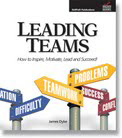#1: Be a Good Coach

— Image by © Royalty-Free/Corbis
In early 2009, statisticians inside Google embarked on a plan they code-named Project Oxygen.
Their mission was to build better bosses.
In Project Oxygen, the statisticians gathered more than 10,000 observations about Google managers—across more than 100 variables, from various performance reviews, feedback surveys and other reports. Then they spent time coding the comments in order to look for patterns. Once they had some working theories, they interviewed managers to gather more data and to look for evidence that supported their notions.
The next step was to code and synthesize all those results — more than 400 pages of interview notes. And finally, rolling out the results to employees and incorporating them into various training programs. [NOTE: They continually test them for effectiveness.] D. Scott Derue, a management professor at the Ross School of Business at the University of Michigan noted “Although people are always looking for the next new thing in leadership, Google’s data suggest that not much has changed in terms of what makes for an effective leader.”
We agree—not much has changed because basic human nature hasn’t changed!
In this new series, we’ll be featuring the results of this unique research project, by highlighting the eight key management behaviors it identified as being essential to effective leadership… starting with this issue.
RULE #1 – Be a good coach
Start by embracing your most basic responsibility as a leader and remind yourself: MY #1 JOB IS TO HELP MY PEOPLE SUCCEED. Good coaching comes directly under this heading—it is your job to GET people on the right track to success and KEEP them on the right track to success. Google’s rules put it this way:
Provide specific, constructive feedback, balancing the negative and the positive.
When your people get off track and are struggling to succeed, it’s your responsibility to intervene and help them. That means taking them aside privately to deliver the right kind of constructive criticism. (If you need help with some specific guidelines and tools, read the blogpost, Turning Correction Into Compliments and download the accompanying Issues of The LeadershipTracks Newsletter and the companion issue of The Personal Trainer. You’ll find the links to these resources in the blogpost.)
Keeping people on track will require you to give positive feedback to your succeeding team members.
How often? One study showed that managers who praise or affirm an employee one more time per day than they normally do… can raise that employee’s productivity by as much as 31% (!).
How much? Psychologist and business consultant Marcial Losada has spent ten years of research discovering how important positive feedback is to team productivity. His extensive mathematical modeling has shown that the minimum ratio of positive to negative feedback required for a team to produce good work is 2.9013. Other research has shown that the ideal ratio needed for a team to produce their very best work is 6 to 1. (If you need help with this, go on our archive and get the LeadershipTracks Newsletter Issue #5 and the accompanying issue of The Personal Trainer.)
Google’s rules also recommend:
Have regular one-on-ones, presenting solutions to problems tailored to your employees’ specific strengths.
This is exactly what I do for my executive coaching clients! In my sessions with clients, I focus on their strengths, and how the client can employ those strengths effectively while avoiding the barriers those same strengths can often create.
For example, I have a lot of Type A coaching clients, whose drive to produce helps them to rise quickly in their organization. Here’s the irony: the same strong personal drive will often work against them at higher levels, when colleagues and team members experience it as “pushy, demanding, bossy, autocratic, and controlling.” I give these coaching clients tips on how to resolve their “strength ironies” with simple, behavioral solutions.
Sadly, most bosses are not good coaches when it comes to this type of need. (This is why I have work as an executive coach—it is often easier for a third party like me to lower a client’s defensiveness and work more constructively with them as a result.)
If you need help to address the strengths that are getting in your way, we can help! Call us and we can arrange coaching sessions that will immediately help you improve your ability to lead, influence, and collaborate!
Or… If you have a subordinate who is struggling because of problematic behaviors, we can help them in the same way. Give us a call and we’ll explain how our executive coaching sessions can address their challenges and help them succeed!
And if you would like top-notch training to help your managers and supervisors become more effective in their various leadership roles, we have a proven track record for success—let us show you how we can provide practical tools and common-sense wisdom that will equip your people for better performance and greater impact!
In the meantime…keep checking out this blog! I will be continuing this series with a helpful commentary for each of the Google’s Rules. Don’t miss any of the insightful and practical posts–I guarantee they will take your learning and your leading to the next level!
Yours for better leaders and better organizations!
Dr. Jim Dyke – The Boss Doctor
Helping you to BE a better boss; and HAVE a better boss!


